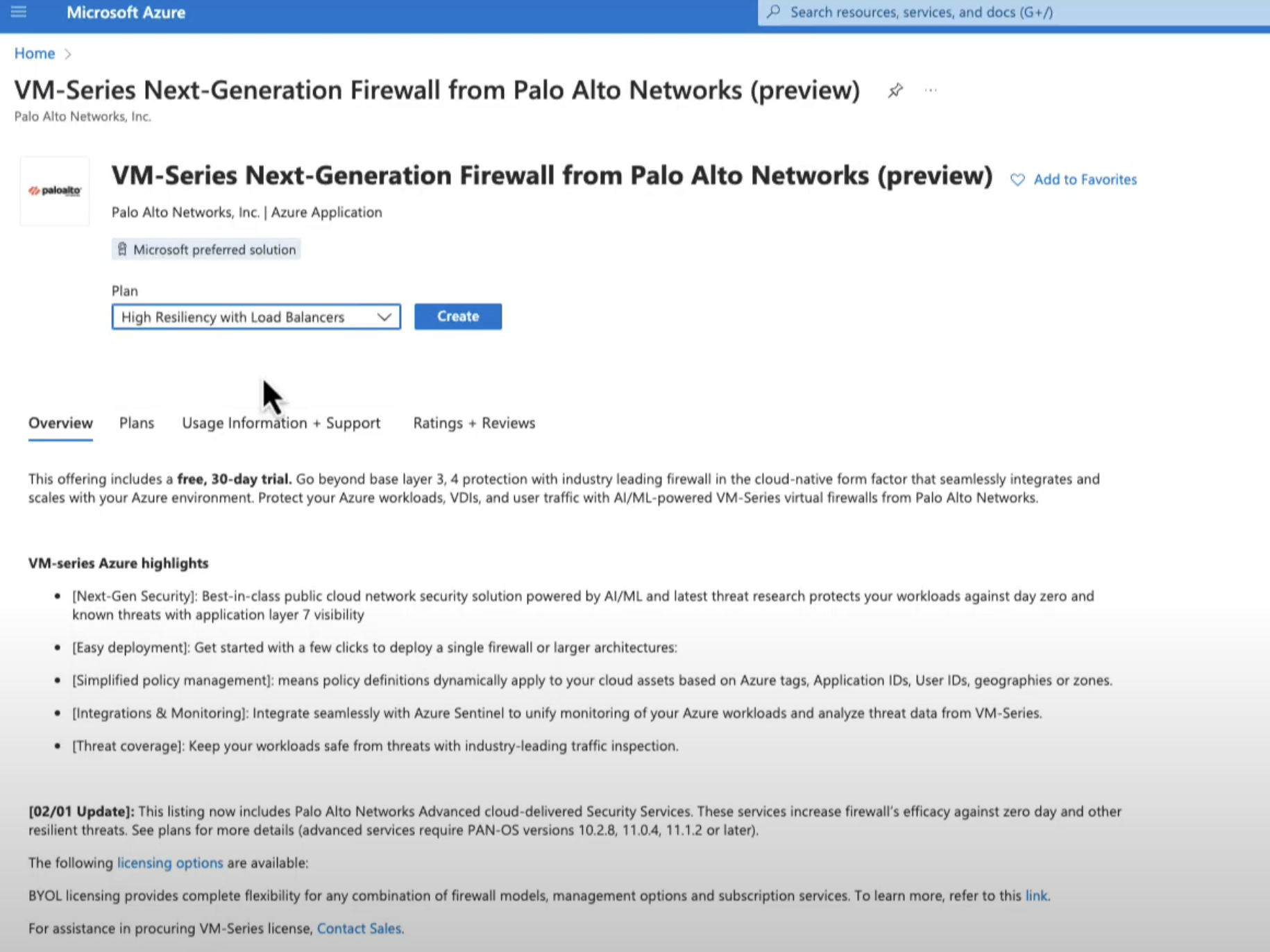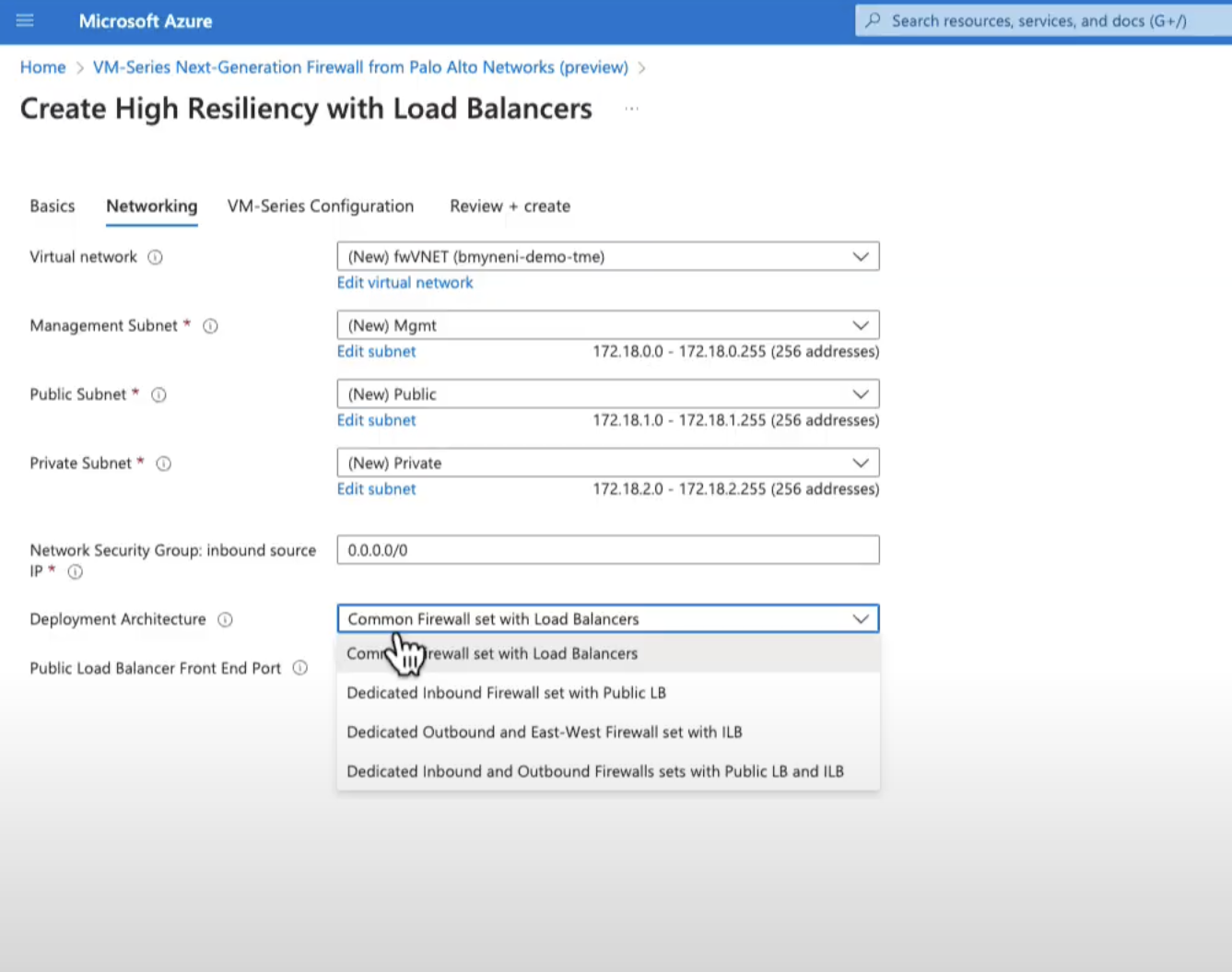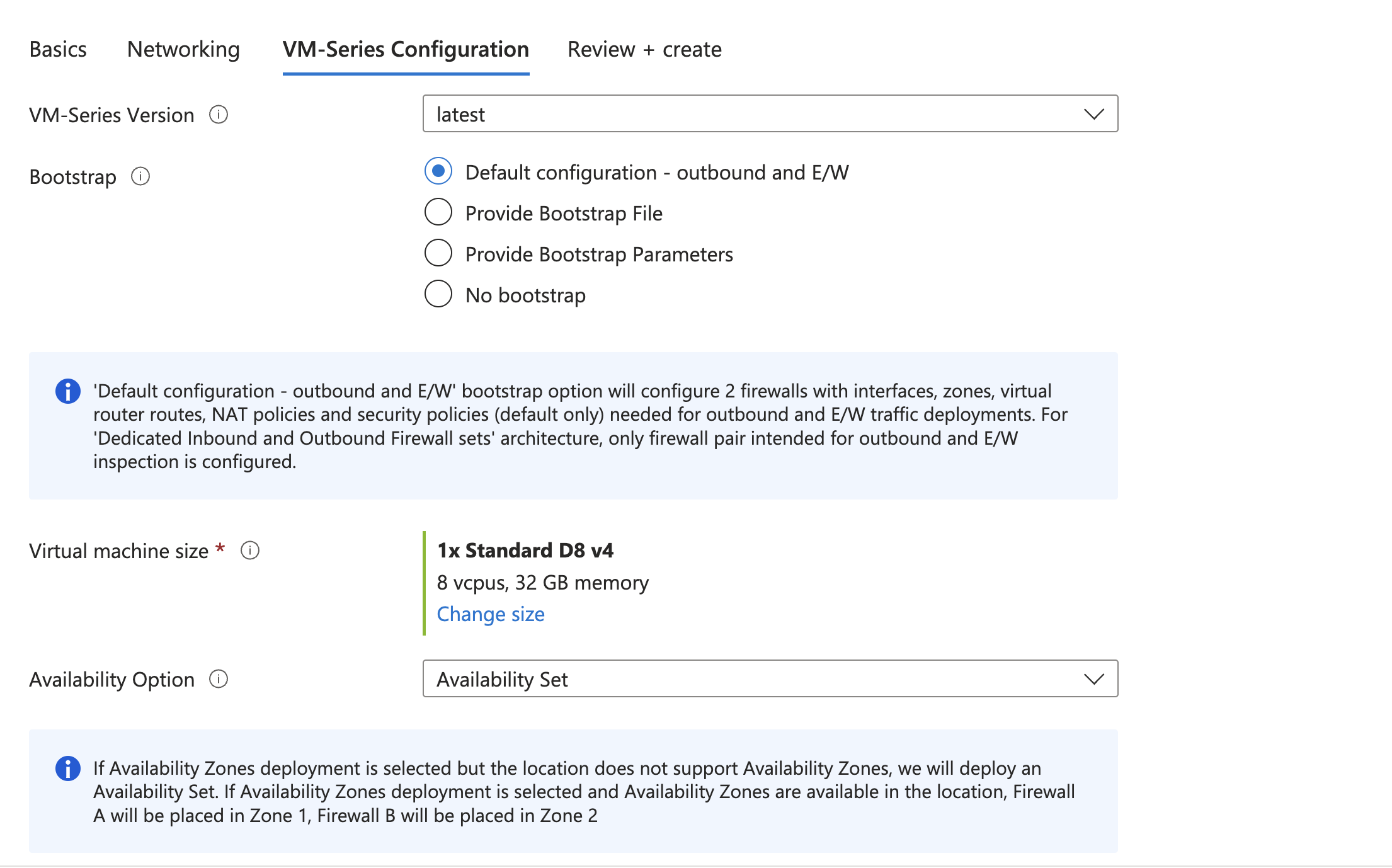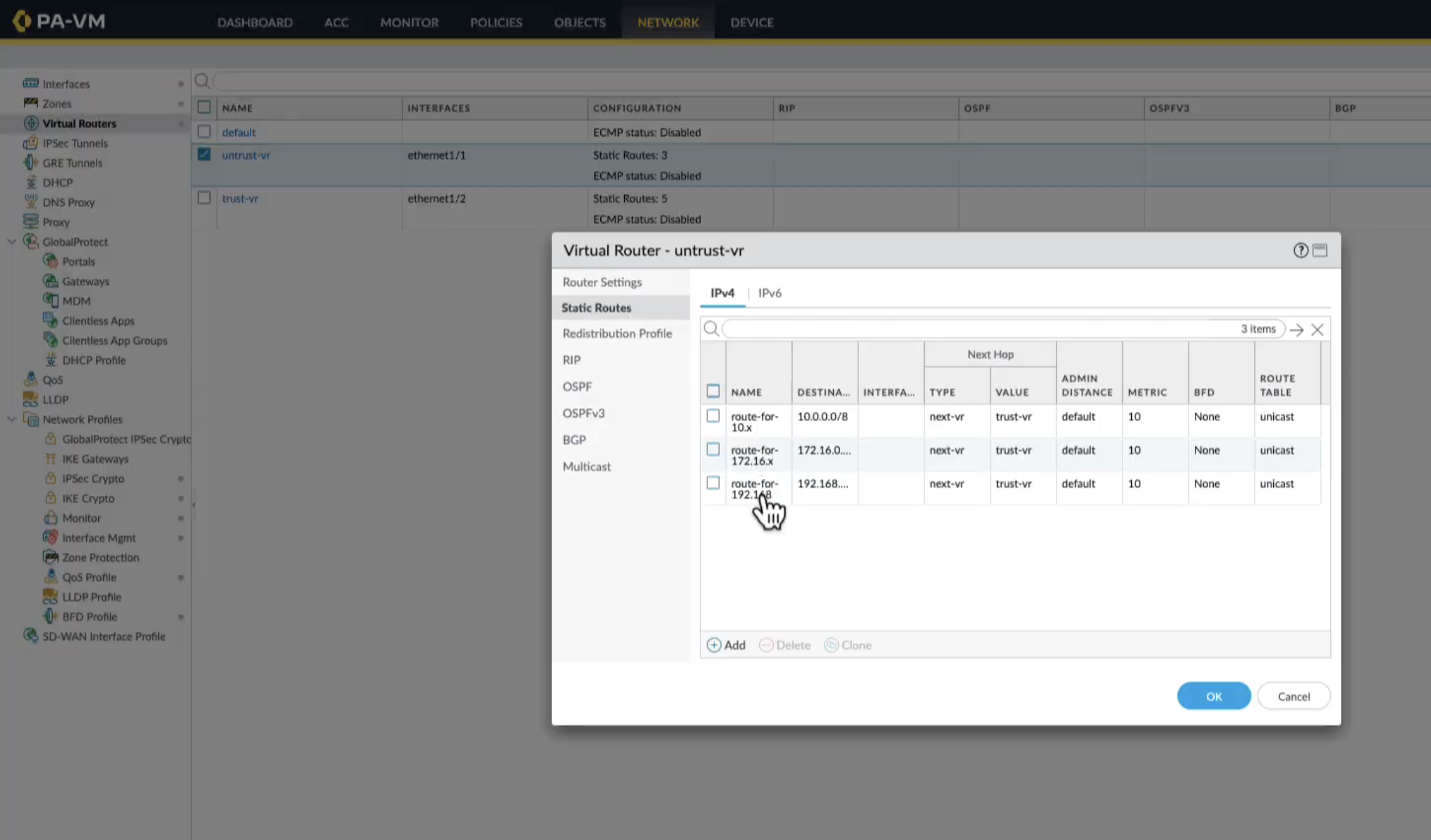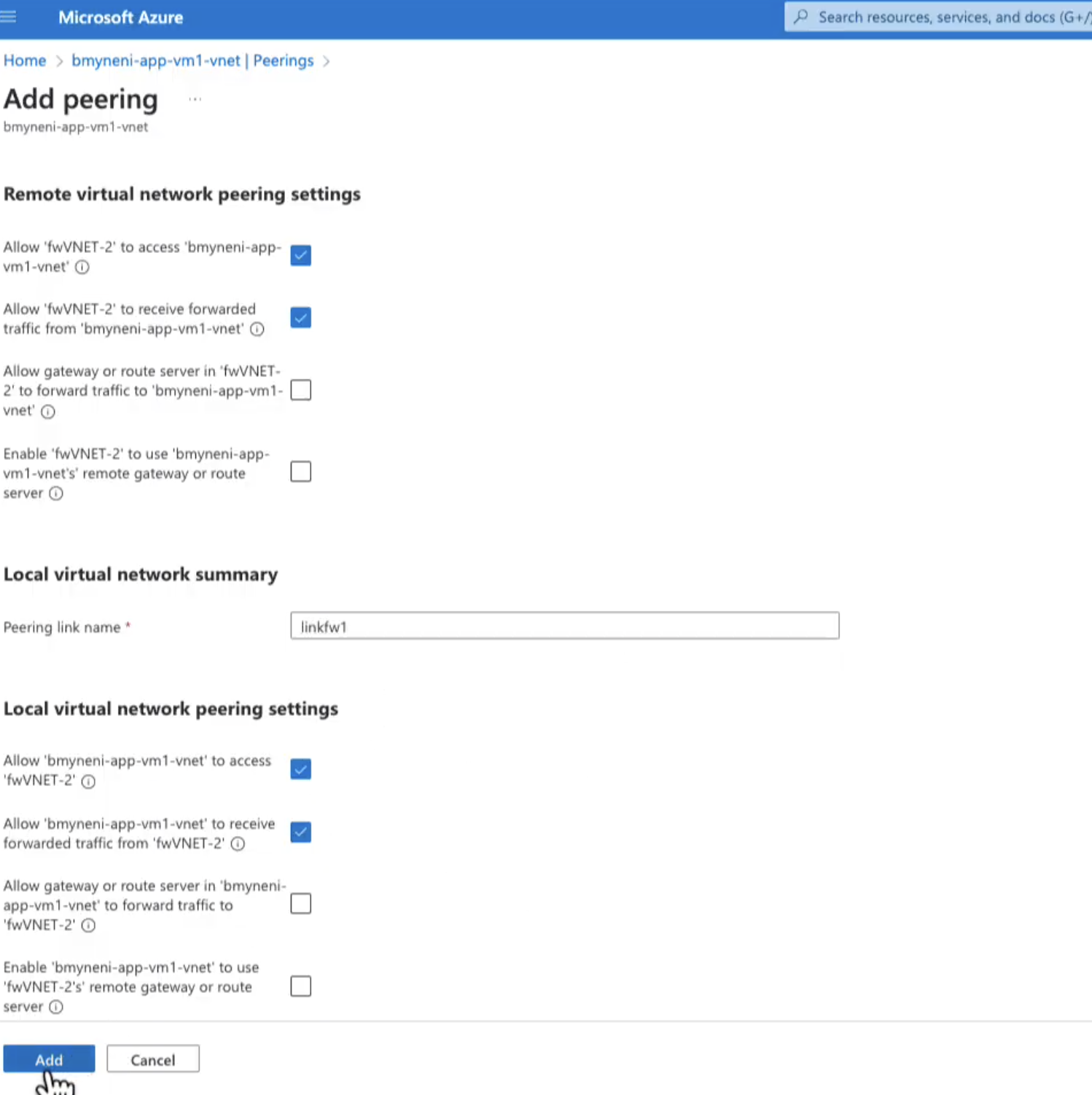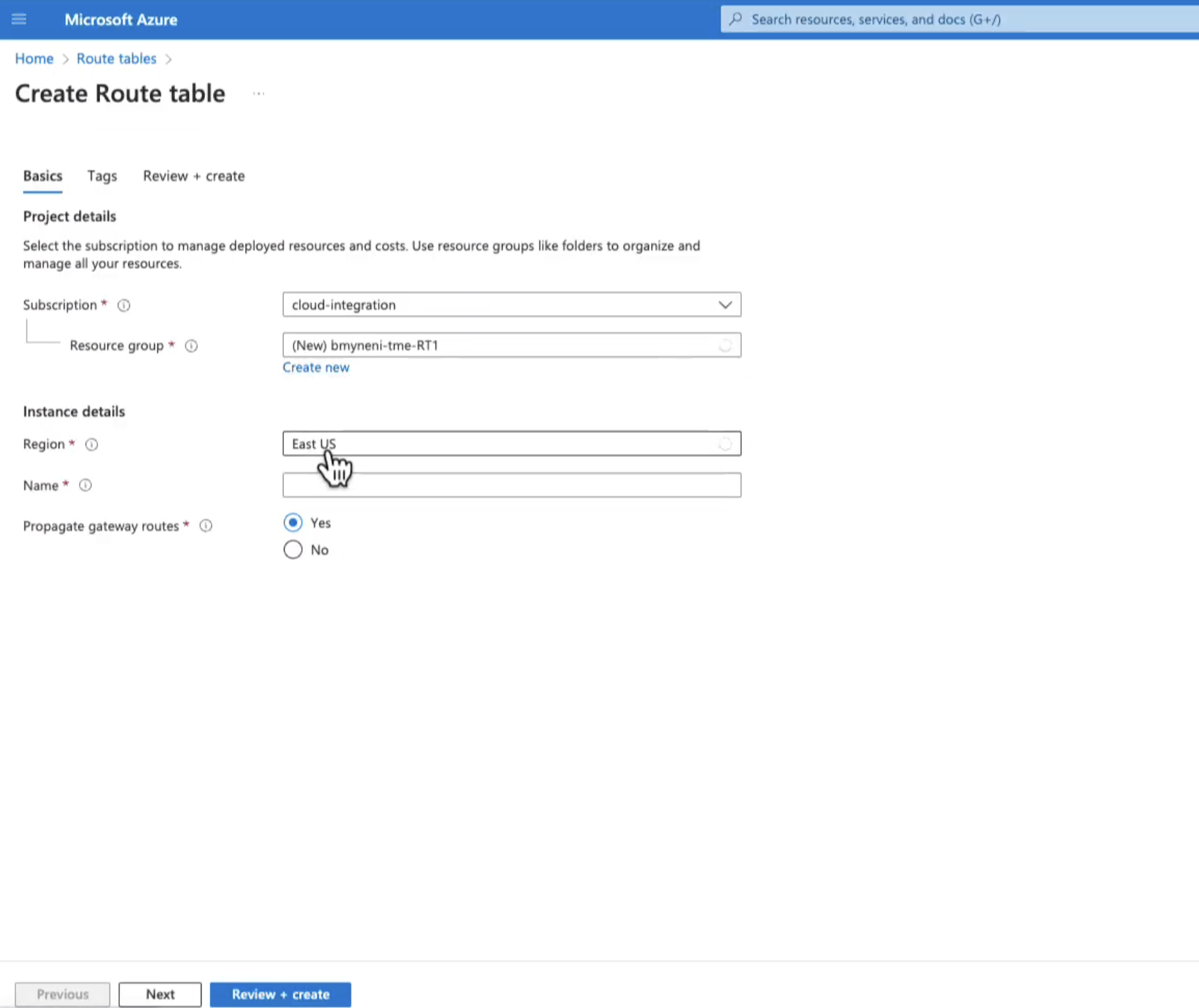Download PDF
Simplified Onboarding of VM-Series Firewall on Azure
Table of Contents
Expand all | Collapse all
-
- VM-Series Deployments
- VM-Series in High Availability
- IPv6 Support on Public Cloud
- Enable Jumbo Frames on the VM-Series Firewall
- Hypervisor Assigned MAC Addresses
- Custom PAN-OS Metrics Published for Monitoring
- Interface Used for Accessing External Services on the VM-Series Firewall
- PacketMMAP and DPDK Driver Support
- Enable NUMA Performance Optimization on the VM-Series
- Enable ZRAM on the VM-Series Firewall
-
- Licensing and Prerequisites for Virtual Systems Support on VM-Series
- System Requirements for Virtual Systems Support on VM-Series
- Enable Multiple Virtual Systems Support on VM-Series Firewall
- Enable Multiple Virtual Systems Support on VM-Series in Panorama Console
- Enable Multiple Virtual Systems Support Using Bootstrap Method
-
- VM-Series Firewall Licensing
- Create a Support Account
- Serial Number and CPU ID Format for the VM-Series Firewall
- Use Panorama-Based Software Firewall License Management
-
- Activate Credits
- Create a Deployment Profile
- Activate the Deployment Profile
- Manage a Deployment Profile
- Register the VM-Series Firewall (Software NGFW Credits)
- Provision Panorama
- Migrate Panorama to a Software NGFW License
- Transfer Credits
- Renew Your Software NGFW Credits
- Deactivate License (Software NGFW Credits)
- Delicense Ungracefully Terminated Firewalls
- Set the Number of Licensed vCPUs
- Customize Dataplane Cores
- Migrate a Firewall to a Flexible VM-Series License
-
- Generate Your OAuth Client Credentials
- Manage Deployment Profiles Using the Licensing API
- Create a Deployment Profile Using the Licensing API
- Update a Deployment Profile Using the Licensing API
- Get Serial Numbers Associated with an Authcode Using the API
- Deactivate a VM-Series Firewall Using the API
- What Happens When Licenses Expire?
-
- Supported Deployments on VMware vSphere Hypervisor (ESXi)
-
- Plan the Interfaces for the VM-Series for ESXi
- Provision the VM-Series Firewall on an ESXi Server
- Perform Initial Configuration on the VM-Series on ESXi
- Add Additional Disk Space to the VM-Series Firewall
- Use VMware Tools on the VM-Series Firewall on ESXi and vCloud Air
- Use vMotion to Move the VM-Series Firewall Between Hosts
- Use the VM-Series CLI to Swap the Management Interface on ESXi
- Configure Link Aggregation Control Protocol
- ESXi Simplified Onboarding
-
-
- Supported Deployments of the VM-Series Firewall on VMware NSX-T (North-South)
- Components of the VM-Series Firewall on NSX-T (North-South)
-
- Install the Panorama Plugin for VMware NSX
- Enable Communication Between NSX-T Manager and Panorama
- Create Template Stacks and Device Groups on Panorama
- Configure the Service Definition on Panorama
- Deploy the VM-Series Firewall
- Direct Traffic to the VM-Series Firewall
- Apply Security Policy to the VM-Series Firewall on NSX-T
- Use vMotion to Move the VM-Series Firewall Between Hosts
- Extend Security Policy from NSX-V to NSX-T
-
- Components of the VM-Series Firewall on NSX-T (East-West)
- VM-Series Firewall on NSX-T (East-West) Integration
- Supported Deployments of the VM-Series Firewall on VMware NSX-T (East-West)
-
- Install the Panorama Plugin for VMware NSX
- Enable Communication Between NSX-T Manager and Panorama
- Create Template Stacks and Device Groups on Panorama
- Configure the Service Definition on Panorama
- Launch the VM-Series Firewall on NSX-T (East-West)
- Add a Service Chain
- Direct Traffic to the VM-Series Firewall
- Apply Security Policies to the VM-Series Firewall on NSX-T (East-West)
- Use vMotion to Move the VM-Series Firewall Between Hosts
-
- Install the Panorama Plugin for VMware NSX
- Enable Communication Between NSX-T Manager and Panorama
- Create Template Stacks and Device Groups on Panorama
- Configure the Service Definition on Panorama
- Launch the VM-Series Firewall on NSX-T (East-West)
- Create Dynamic Address Groups
- Create Dynamic Address Group Membership Criteria
- Generate Steering Policy
- Generate Steering Rules
- Delete a Service Definition from Panorama
- Migrate from VM-Series on NSX-T Operation to Security Centric Deployment
- Extend Security Policy from NSX-V to NSX-T
- Use In-Place Migration to Move Your VM-Series from NSX-V to NSX-T
-
-
- Deployments Supported on AWS
-
- Planning Worksheet for the VM-Series in the AWS VPC
- Launch the VM-Series Firewall on AWS
- Launch the VM-Series Firewall on AWS Outpost
- Create a Custom Amazon Machine Image (AMI)
- Encrypt EBS Volume for the VM-Series Firewall on AWS
- Use the VM-Series Firewall CLI to Swap the Management Interface
- Enable CloudWatch Monitoring on the VM-Series Firewall
- Publish ENA Network Performance Metrics to AWS CloudWatch
- VM-Series Firewall Startup and Health Logs on AWS
- Simplified Onboarding of VM-Series Firewall on AWS
- Use AWS Secrets Manager to Store VM-Series Certificates
- AWS Shared VPC Monitoring
- Use Case: Secure the EC2 Instances in the AWS Cloud
- Use Case: Use Dynamic Address Groups to Secure New EC2 Instances within the VPC
-
- Intelligent Traffic Offload
- Software Cut-through Based Offload
-
- Deployments Supported on Azure
- Deploy the VM-Series Firewall from the Azure Marketplace (Solution Template)
- Simplified Onboarding of VM-Series Firewall on Azure
- Deploy the VM-Series Firewall from the Azure China Marketplace (Solution Template)
- Deploy the VM-Series with the Azure Gateway Load Balancer
- Create a Custom VM-Series Image for Azure
- Deploy the VM-Series Firewall on Azure Stack
- Deploy the VM-Series Firewall on Azure Stack HCI
- Enable Azure Application Insights on the VM-Series Firewall
- Azure Health Monitoring
- Set up Active/Passive HA on Azure
- Use Azure Key Vault to Store VM-Series Certificates
- Use the ARM Template to Deploy the VM-Series Firewall
-
- About the VM-Series Firewall on Google Cloud Platform
- Supported Deployments on Google Cloud Platform
- Create a Custom VM-Series Firewall Image for Google Cloud Platform
- Prepare to Set Up VM-Series Firewalls on Google Public Cloud
-
- Deploy the VM-Series Firewall from Google Cloud Platform Marketplace
- Management Interface Swap for Google Cloud Platform Load Balancing
- Use the VM-Series Firewall CLI to Swap the Management Interface
- Enable Google Stackdriver Monitoring on the VM Series Firewall
- Enable VM Monitoring to Track VM Changes on Google Cloud Platform (GCP)
- Use Dynamic Address Groups to Secure Instances Within the VPC
- Use Custom Templates or the gcloud CLI to Deploy the VM-Series Firewall
- Enable Session Resiliency on VM-Series for GCP
- Secure Boot Support for VM-Series on GCP
-
- Prepare Your ACI Environment for Integration
-
-
- Create a Virtual Router and Security Zone
- Configure the Network Interfaces
- Configure a Static Default Route
- Create Address Objects for the EPGs
- Create Security Policy Rules
- Create a VLAN Pool and Domain
- Configure an Interface Policy for LLDP and LACP for East-West Traffic
- Establish the Connection Between the Firewall and ACI Fabric
- Create a VRF and Bridge Domain
- Create an L4-L7 Device
- Create a Policy-Based Redirect
- Create and Apply a Service Graph Template
-
- Create a VLAN Pool and External Routed Domain
- Configure an Interface Policy for LLDP and LACP for North-South Traffic
- Create an External Routed Network
- Configure Subnets to Advertise to the External Firewall
- Create an Outbound Contract
- Create an Inbound Web Contract
- Apply Outbound and Inbound Contracts to the EPGs
- Create a Virtual Router and Security Zone for North-South Traffic
- Configure the Network Interfaces
- Configure Route Redistribution and OSPF
- Configure NAT for External Connections
-
-
- Choose a Bootstrap Method
- VM-Series Firewall Bootstrap Workflow
- Bootstrap Package
- Bootstrap Configuration Files
- Bootstrapping VM-Series in Virtual Metadata Collector Mode
- Generate the VM Auth Key on Panorama
- Create the bootstrap.xml File
- Prepare the Licenses for Bootstrapping
- Prepare the Bootstrap Package
- Bootstrap the VM-Series Firewall on AWS
- Bootstrap the VM-Series Firewall on Azure
- Bootstrap the VM-Series Firewall on Azure Stack HCI
- Bootstrap the VM-Series Firewall on Google Cloud Platform
- Verify Bootstrap Completion
- Bootstrap Errors
Simplified Onboarding of VM-Series Firewall on Azure
Simplified onboarding of VM-Series on Azure.
The simplified onboarding flow streamlines the deployment and initial
configuration of VM-Series firewalls in Azure. This flow deploys production-ready
out-of-the-box architecture and firewall configuration for users who may be new to
VM-Series on Azure.
The firewall configuration includes essentials like interfaces (ethernet1/1 and
ethernet1/2), zones (untrust and trust), virtual Routers (untrust-vr and trust-vr),
static routes, outbound NAT policies, and security policies (defaults to allow health
probe traffic).
Prerequisites
For simplified onboarding of VM-Series firewall on Azure, ensure to use the
following PAN-OS versions and license types:
Supported PAN-OS Version
- PAN-OS version 10.2.14 or above
- PAN-OS version 11.1.8 or above
- PAN-OS version 11.2.5 or above
Supported License Types
- BYOL (Bring your own license)
- PAYG (Pay-as-you-go)
Simplified Onboarding for VM Series Solution templates on Azure Marketplace
Azure Marketplace Solution Templates support both Single Firewall and load
balancer based reference architectures.
The following are the steps for a simplified onboarding of multiple
VM-Series firewalls with load balancers.
- Navigate to Azure Marketplace.
- Log in to the Azure portal.
- In the Azure portal dashboard, click the search bar at the top.
- Search for VM-Series Next-Generation Firewall and select the listing titled VM-Series Next-Generation Firewall by Palo Alto Networks.
![]()
- In the Plan drop down menu, select High Resiliency with Load Balancers.
- Click Create on the marketplace overview page.
- Basic configuration.Configure basic settings for the firewall.
- Select your Azure Subscription.
- Create a new resource group or select an existing resource group that is empty. The resource group will hold all the resources associated with the VM-Series firewall for this deployment.
- Azure has removed the option to select an existing resource group for Marketplace solutions that enable multiple network interface controllers (NICs). To deploy the firewall into an existing resource group, use the ARM template in the GitHub Repository or use your own custom ARM template.
- Select the Azure Region in which you are deploying the firewall.
- Enter a Username for the firewall administrator.
- Select the Authentication type—Password or SSH Public Key.
- Enter a Password (up to 31 characters) or copy and paste an SSH public key for securing administrative access to the firewall.
- Confirm the password.
- Select the License Type.
- Enter the Deployment Tag that you specified while creating the resource group.
- Click Next.
- Configure networking.You can see that the Virtual Network, management subnet, public subnet, private subnet, and Network Security group IP addresses are already populated.
- Select the Deployment architecture.
![]() VM-Series with high resiliency load balancers support four different deployment architectures: Common firewall set with LB, Dedicated inbound firewall set with Public LB, Dedicated outbound and east-west firewall set with ILB, and Dedicated inbound and outbound firewalls sets with public LB and ILB. Select one of these for your deployment architecture. For more information, see Deploy the VM-Series Firewall from the Azure Marketplace (Solution Template).
VM-Series with high resiliency load balancers support four different deployment architectures: Common firewall set with LB, Dedicated inbound firewall set with Public LB, Dedicated outbound and east-west firewall set with ILB, and Dedicated inbound and outbound firewalls sets with public LB and ILB. Select one of these for your deployment architecture. For more information, see Deploy the VM-Series Firewall from the Azure Marketplace (Solution Template). - Click Next.
- VM-Series Configuration.
- Select the VM-Series Version.
- Select the Default configuration - outbound and E/W bootstrap option to boot the firewalls with default pre-configurations needed for outbound traffic inspection.
![]()
- Select the Availability Option
- Click Next.
- Review the summary, and OK. Then accept the terms of use and privacy policy, and click Create to launch the firewall.
- OptionalValidate Firewall Configuration
- Log in to the VM-Series firewall web interface. For more information, see Launch the firewall web interface.
- Go to the Network tab.
- Click interfaces and verify if the interfaces are correctly assigned:
- Ethernet1/1 should be in the Untrust zone.
- Ethernet1/2 should be in the Trust zone.
- Verify Routing. In the Virtual Router section, ensure static routes for outbound and east-west traffic are present.
![]()
- Verify Security Policies.Navigate to the Policies tab and confirm default rules are present:
- Intra-zone traffic is allowed.
- Inter-zone traffic is denied.
Verify the presence of a NAT policy for outbound internet traffic.
- Peer Application VNet with the trust Vnet
- Navigate to the Azure portal and open the FirewallVNet resource.
- Go to the Peerings section.
![]()
- Click Add.
- Enter a name.
- Select the application VNet whose traffic you wish to inspect
- Click Add to create the peering.
You can repeat the above process to peer the FirewallVNet with AppVNet2. - Configure Route Tables for each application subnet.
![]()
- Create Route tables for each application subnet:
- Go to Route Tables in the Azure portal and click Create.
- Enter the Region and Name the table (e.g., AppVM1RouteTable) and associate it with the subnet of AppVNet1.
- Repeat the process for AppVNet2.
- Add Routes:You must add two routes to each table:Route 1- Outbound Traffic:
- Enter the Destination IP address.
- Enter the Next Hop type.
- Enter the Next Hop IP Address. This should be the frontend IP of the firewall’s load balancer.
- Click Add.
Route 2 - East-West Traffic:- Enter the Destination IP address. This is the subnet of the other application VNet.
- Enter the Next Hop type.
- Enter the Next Hop IP Address. This should be the frontend IP of the firewall’s load balancer.
You must add two routes to each table:Route 1- Outbound Traffic:- Enter the Destination IP address.
- Enter the Next Hop type.
- Enter the Next Hop IP Address. This should be the frontend IP of the firewall’s load balancer.
- Click Add.
Route 2 - East-West Traffic:- Enter the Destination IP address. This is the subnet of the other application VNet.
- Enter the Next Hop type.
- Enter the Next Hop IP Address. This should be the frontend IP of the firewall’s load balancer.
- Click Add.

